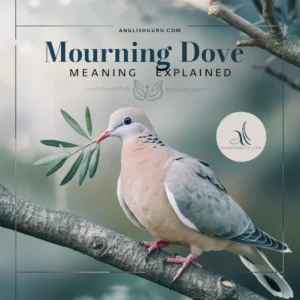Language is constantly evolving, and words often carry deeper layers of history, culture, and interpretation than we initially realize. One such fascinating term is “Shalamar”, a word rich with cultural significance and multiple meanings depending on its context. From historical gardens to poetic symbolism, and even modern-day conversational usage, the meaning of Shalamar goes far beyond a simple definition.
In this article, we will explore the 16+ meanings of Shalamar, examining how it is understood across different contexts. Alongside this, we will also highlight alternatives to the phrase “asl meaning in text”, helping readers discover polite, professional, and casual expressions for digital communication. To make it more practical, we will include 11 texting examples that illustrate how these alternatives can be used naturally in conversations.
By the end, you will not only understand the cultural weight of Shalamar but also gain a toolkit of versatile expressions to use in both formal and informal exchanges.
Origins and Core Meaning of Shalamar
The term Shalamar has historical roots in Persian and Mughal culture. It is derived from the Persian words:
- “Shala” (meaning home or dwelling)
- “Mar” (meaning joy or delight)
Together, Shalamar roughly translates to “abode of joy” or “place of delight.”
Historically, it has been associated with royal Mughal gardens, such as the famous Shalamar Gardens in Lahore (Pakistan) and Shalimar Bagh in Srinagar (India). Both are UNESCO heritage sites, built during the Mughal era to symbolize beauty, harmony, and royal leisure.
Beyond its physical spaces, Shalamar has become a poetic and cultural symbol of serenity, happiness, love, and timeless elegance.
16+ Interpretations and Usages of Shalamar
Here we’ll explore more than 16 interpretations of Shalamar’s meaning, from its cultural depth to modern-day relevance:
1. Shalamar as “Abode of Joy”
Its most direct meaning is a place of happiness, joy, and delight.
2. Historical Gardens
The Mughal gardens named Shalamar represent luxury, beauty, and harmony with nature.
3. Poetic Symbolism
In literature and poetry, Shalamar often symbolizes romantic love, peace, and eternal beauty.
4. Cultural Identity
For South Asia, especially Pakistan and India, Shalamar carries a strong cultural identity and pride.
5. Timeless Elegance
Used metaphorically, “Shalamar” can describe something that feels evergreen and gracefully beautiful.
6. Serenity and Calmness
The meaning is often linked with the calmness of flowing fountains, gardens, and peaceful landscapes.
7. Symbol of Royalty
Because Mughal emperors built these gardens, Shalamar also signifies royalty, power, and majesty.
8. Romantic Reference
In love poetry or songs, Shalamar often represents eternal romance and deep affection.
9. Modern Branding
The name “Shalamar” is used by hotels, restaurants, and even music bands (like the American group Shalamar) to evoke sophistication.
10. Spiritual Retreat
It can represent inner peace or a mental sanctuary where the soul finds rest.
11. Tourist Attraction
In contemporary travel, Shalamar points to famous tourist gardens or heritage sites.
12. Artistic Inspiration
Painters, poets, and musicians often use “Shalamar” as inspiration for its beauty.
13. Everyday Symbol of Beauty
People may casually use Shalamar to describe something beautiful or delightful.
14. Metaphor for Growth
As gardens grow and bloom, Shalamar can symbolize personal growth and renewal.
15. Representation of Balance
The garden’s structure reflects a balance between man-made and natural beauty.
16. Everlasting Legacy
The word conveys something timeless that passes through generations.
17. Personal Connection
For some, Shalamar can be a name, a family tradition, or a nostalgic memory.
Exploring “ASL Meaning in Text” and Alternatives
The internet age has created shorthand expressions, and one common query is: “asl meaning in text.”
Traditionally, ASL stands for:
- Age, Sex, Location (a popular abbreviation from early internet chatrooms).
- In other contexts, it can also mean American Sign Language.
But in modern texting, people often look for polite, professional, or casual alternatives to ask for someone’s details or context without sounding abrupt.
Here are some alternatives to “asl meaning in text” that can be used depending on tone:
- “May I know more about you?” (Polite)
- “Could you share a little about yourself?” (Professional)
- “Where are you from?” (Casual)
- “Mind telling me your background?” (Neutral)
- “Can I ask where you’re based?” (Professional & friendly)
- “What’s your story?” (Casual & engaging)
- “Would you mind sharing your details?” (Formal)
- “Tell me something about yourself!” (Friendly)
- “Where are you located right now?” (Practical)
- “Just curious, what’s your background?” (Casual & polite)
- “Could you introduce yourself?” (Formal & respectful)
11 Texting Examples with Alternatives
To make these alternatives practical, here are 11 real texting examples showing how they can be naturally used.
Example 1 (Polite)
Henry: Hi Leo, may I know more about you?
Leo: Sure! I’m from New York, and I work in finance.
Example 2 (Professional)
Henry: Could you share a little about yourself before we proceed with the meeting?
Leo: Of course, I’ve been working in marketing for five years.
Example 3 (Casual)
Henry: Hey, where are you from?
Leo: I’m from Chicago. You?
Example 4 (Neutral)
Henry: Mind telling me your background?
Leo: I studied architecture, and now working as a designer.
Example 5 (Professional + Friendly)
Henry: Can I ask where you’re based these days?
Leo: I’m currently in Toronto for a project.
Example 6 (Casual + Engaging)
Henry: What’s your story?
Leo: Haha, long one! But I grew up in Texas and love traveling.
Example 7 (Formal)
Henry: Would you mind sharing your details for the record?
Leo: Not at all, here are my contact details and background.
Example 8 (Friendly)
Henry: Tell me something about yourself!
Leo: I’m into photography and hiking.
Example 9 (Practical)
Henry: Where are you located right now?
Leo: I’m in London for a business trip.
Example 10 (Casual + Polite)
Henry: Just curious, what’s your background?
Leo: I studied law and now I’m practicing in New York.
Example 11 (Formal & Respectful)
Henry: Could you introduce yourself to the group?
Leo: Sure, I’m Leo, working as a data analyst for three years.
How to Choose the Best Alternative
When selecting how to phrase your question (instead of just saying “asl”), consider:
- Tone of conversation: Formal vs. casual.
- Relationship with the person: Friend, colleague, or stranger.
- Cultural sensitivity: Some questions (like age or location) may feel intrusive.
- Purpose of the chat: Personal, professional, or casual.
By being mindful of these factors, you can express curiosity politely without sounding outdated or abrupt.
Final Thoughts
The word Shalamar carries layers of history, culture, and poetic depth. From being a literal “abode of joy” to representing Mughal gardens, romance, and serenity, it is a term that transcends time. At the same time, in today’s digital landscape, understanding modern expressions like “asl meaning in text” and exploring alternatives is essential for smooth, respectful communication.
By combining cultural appreciation with digital communication skills, you not only enrich your vocabulary but also connect with others in more meaningful ways.





